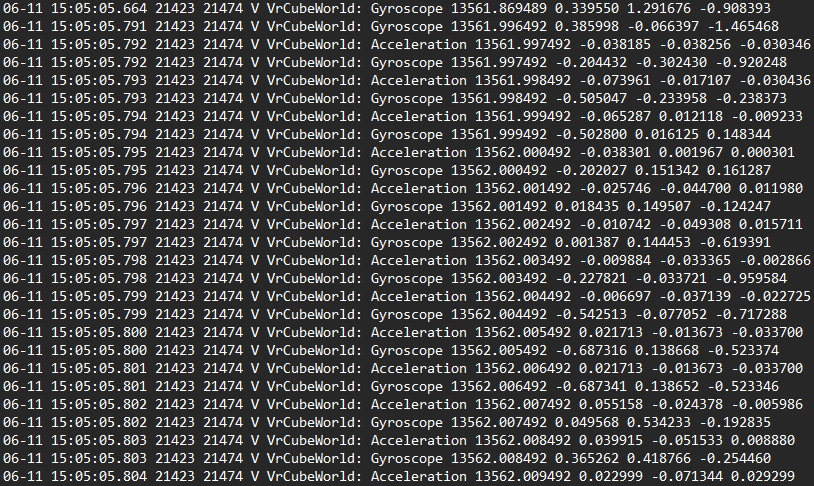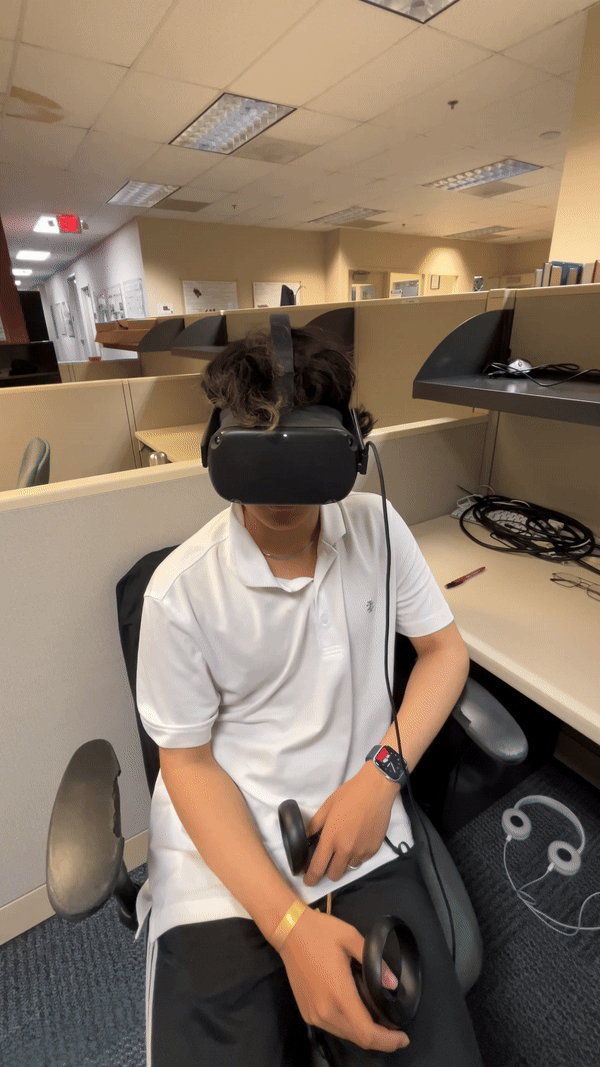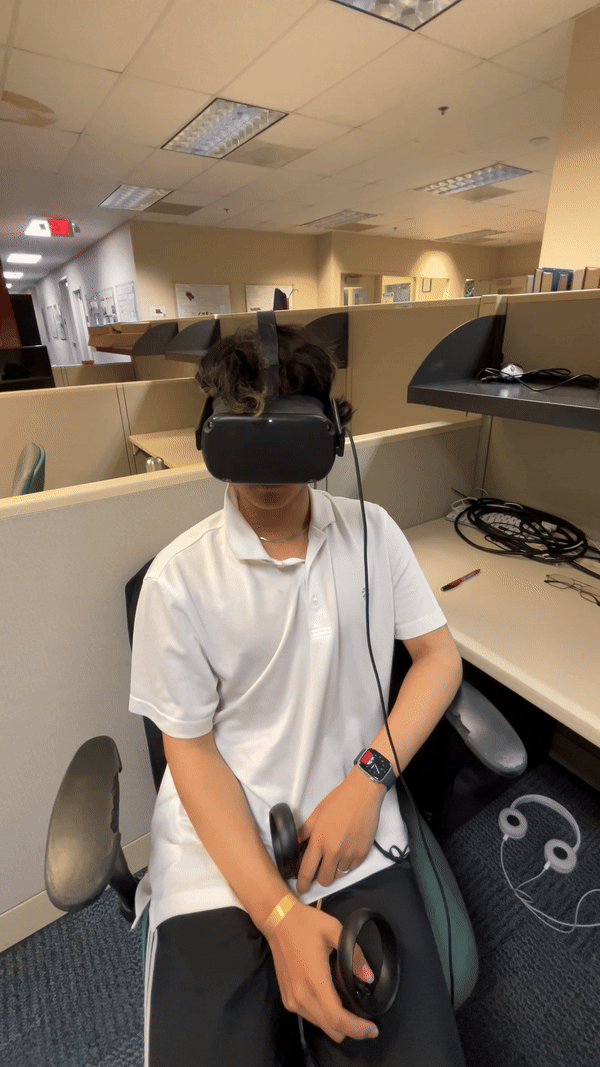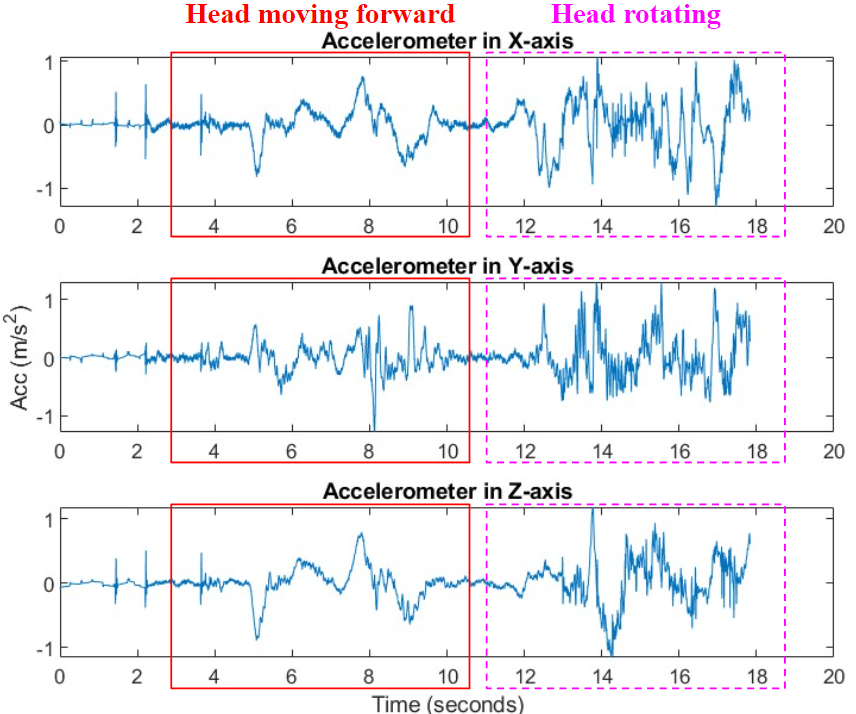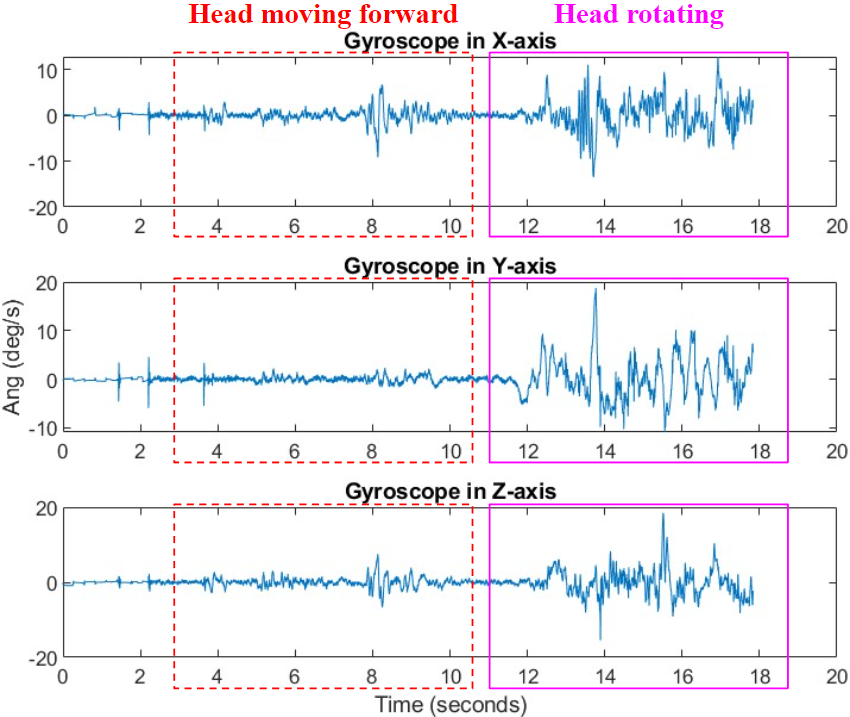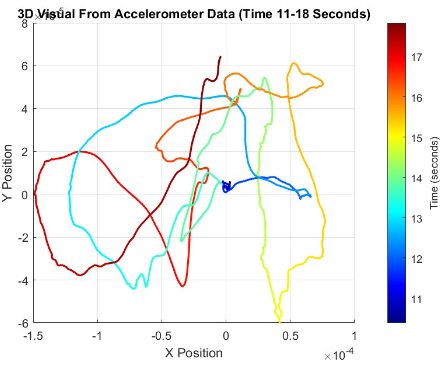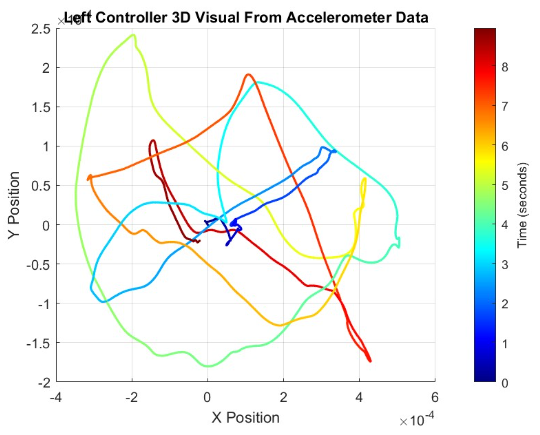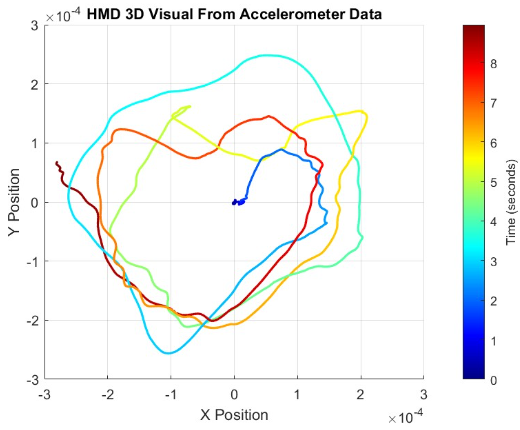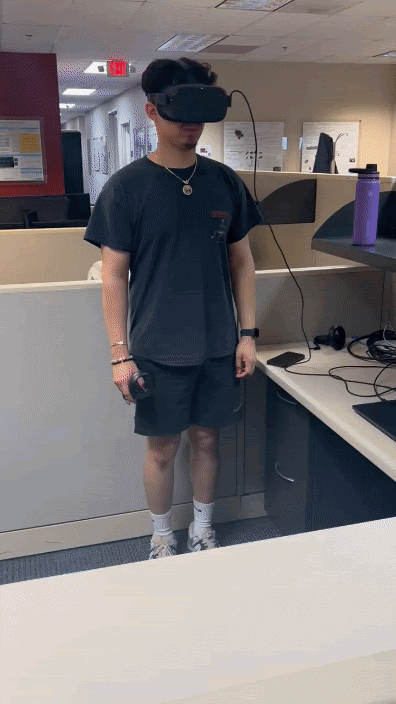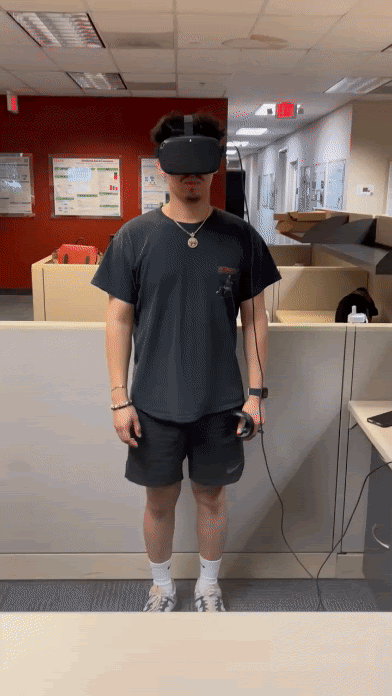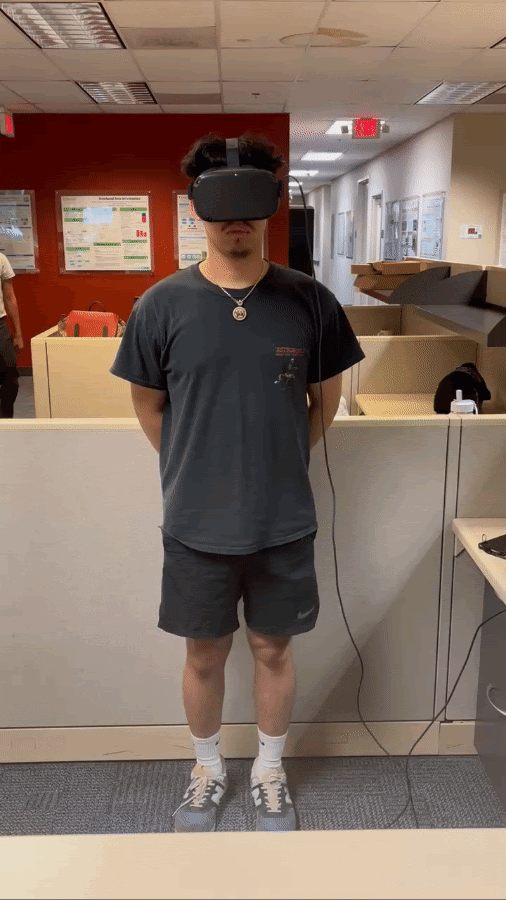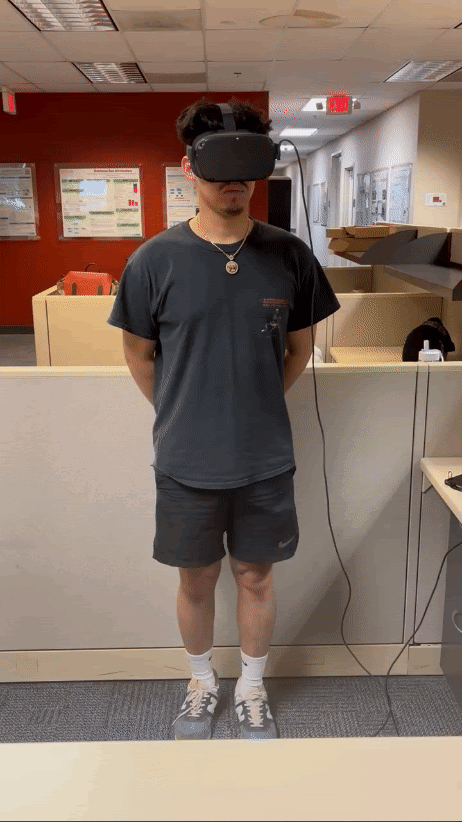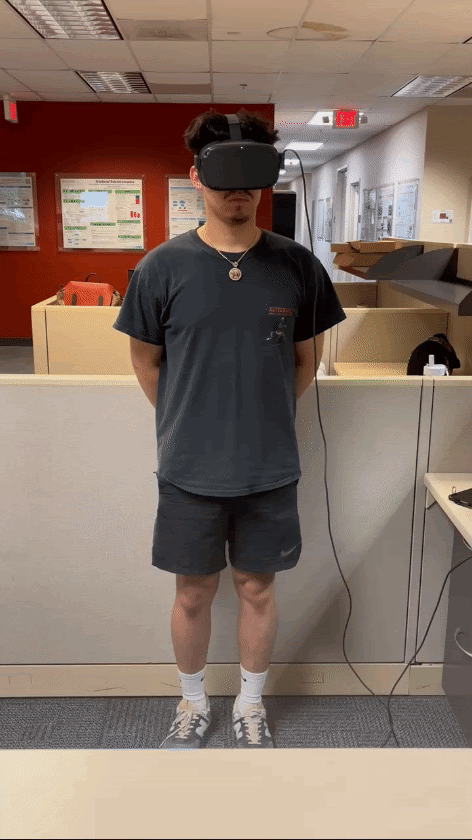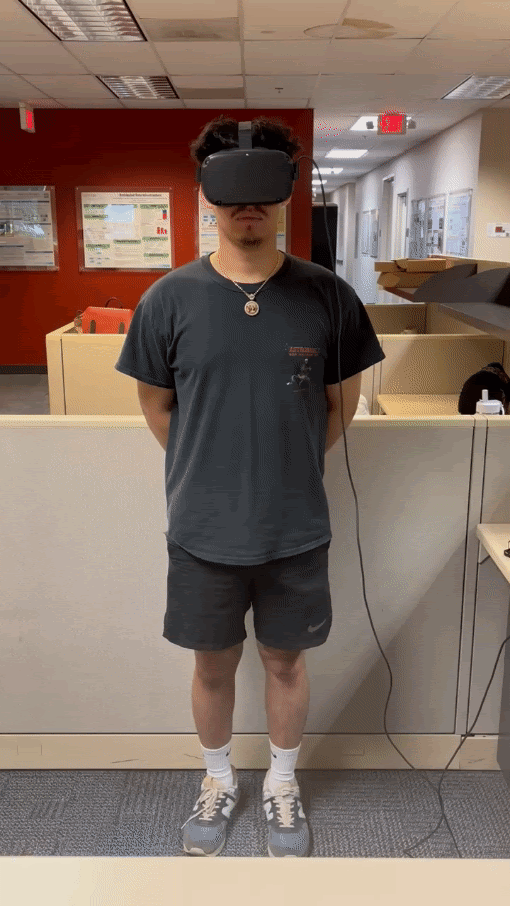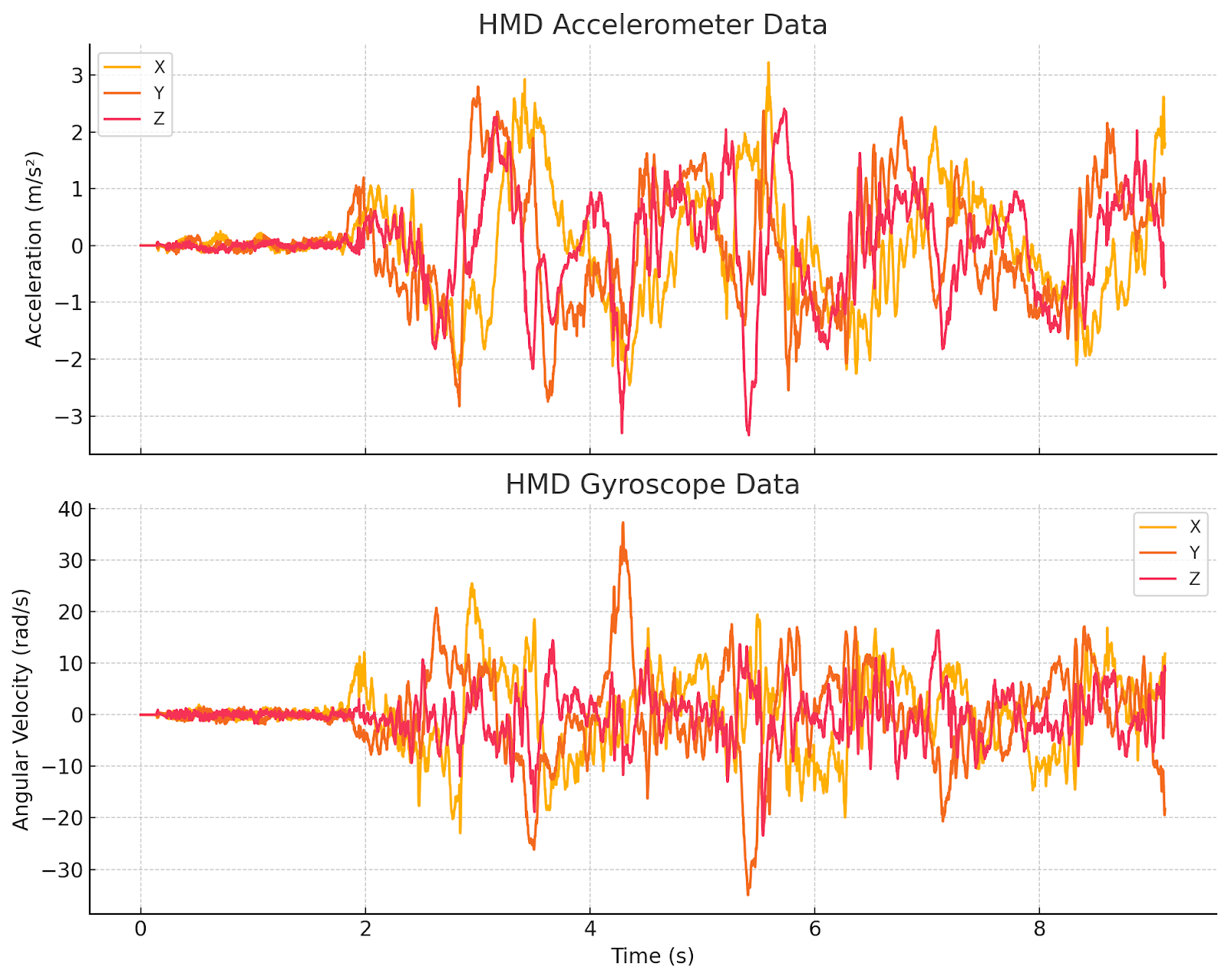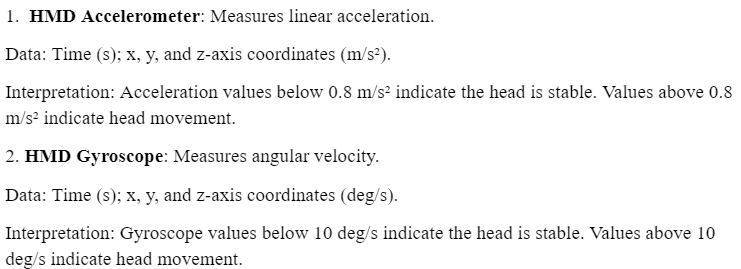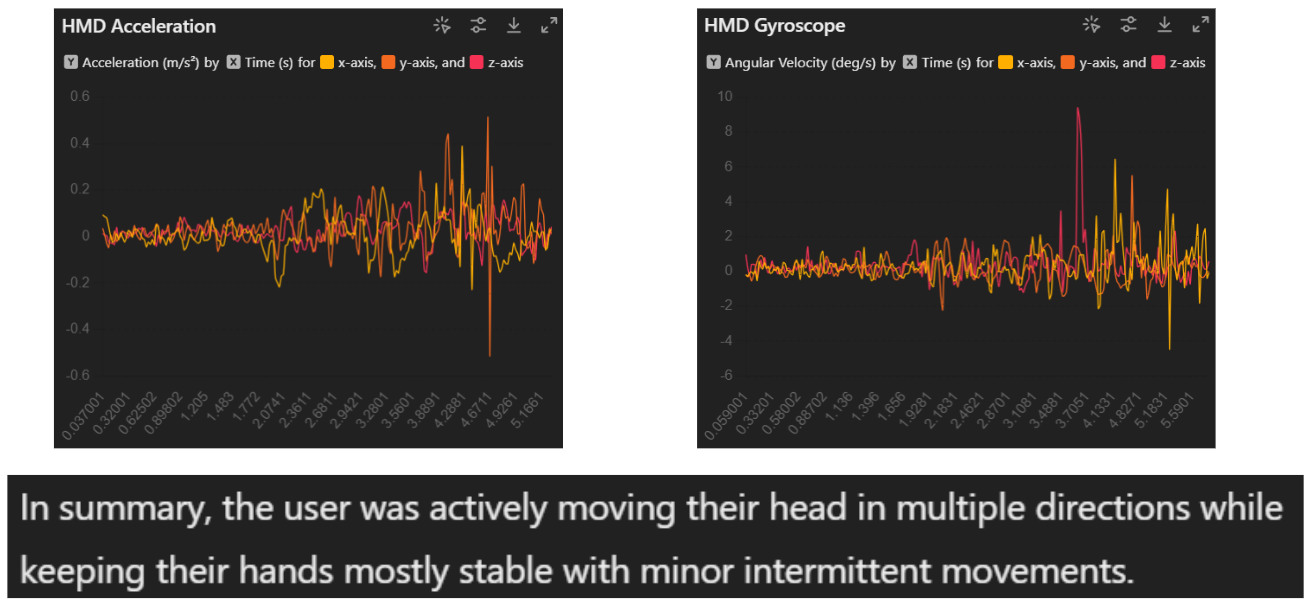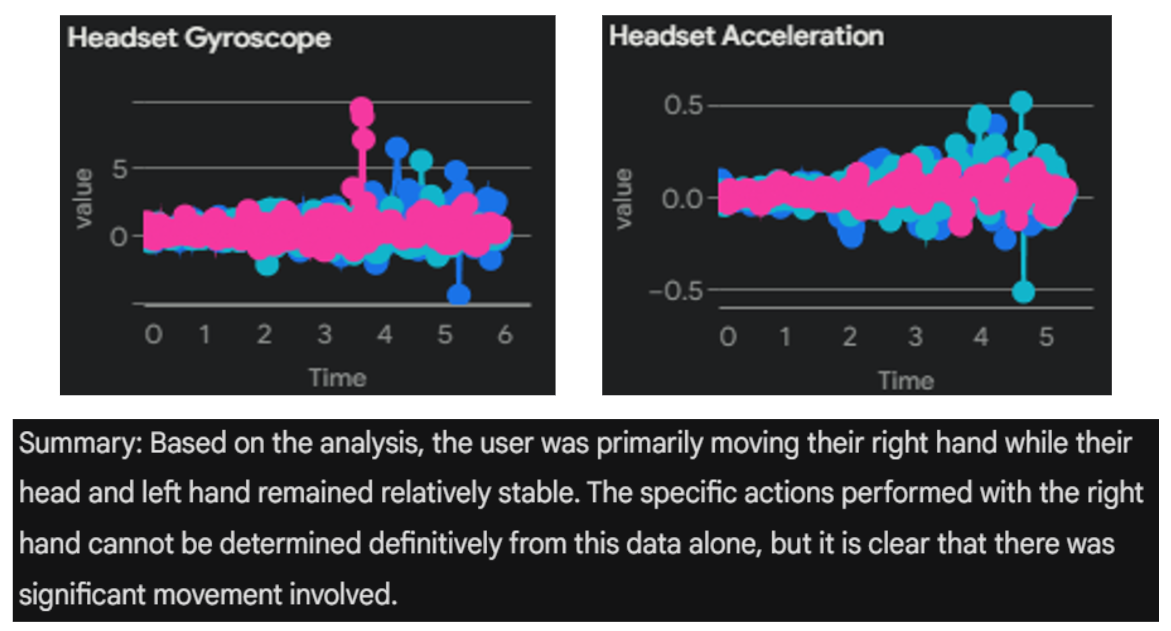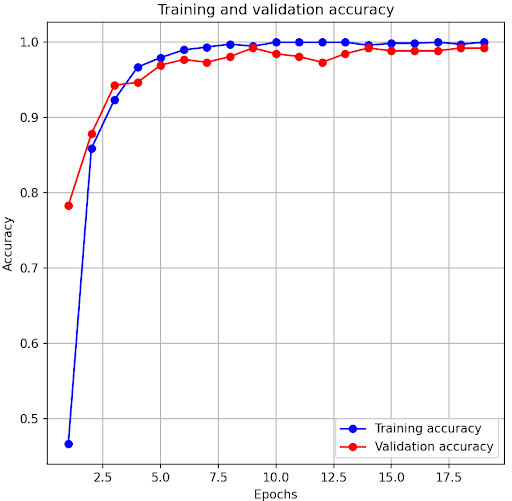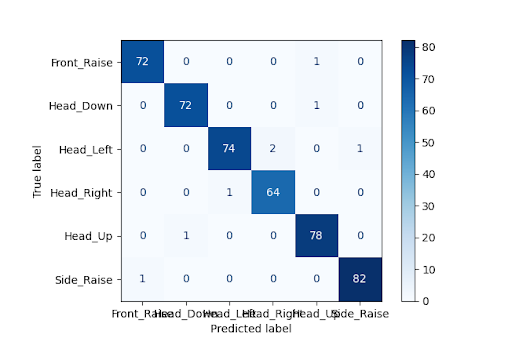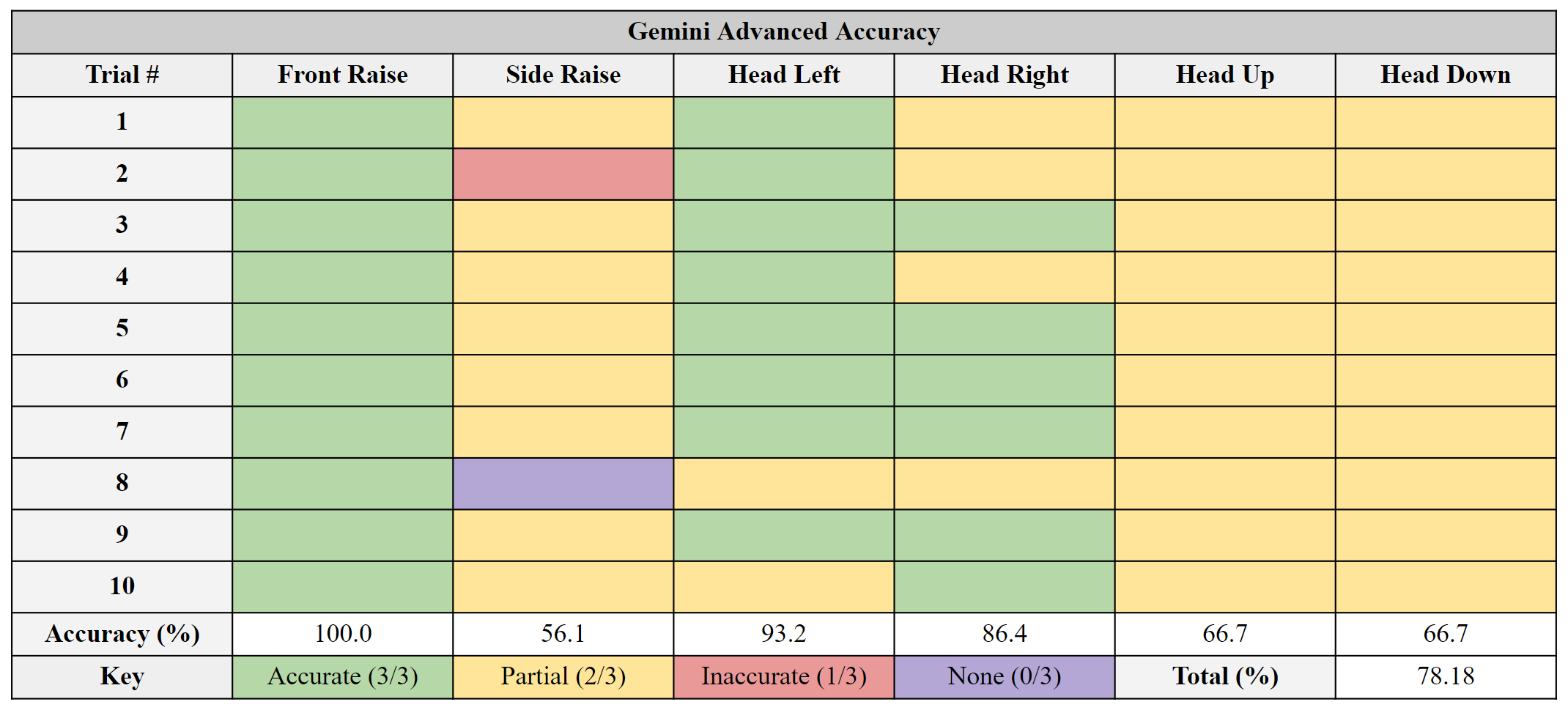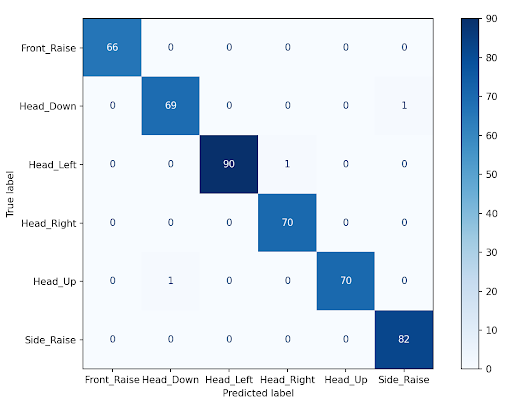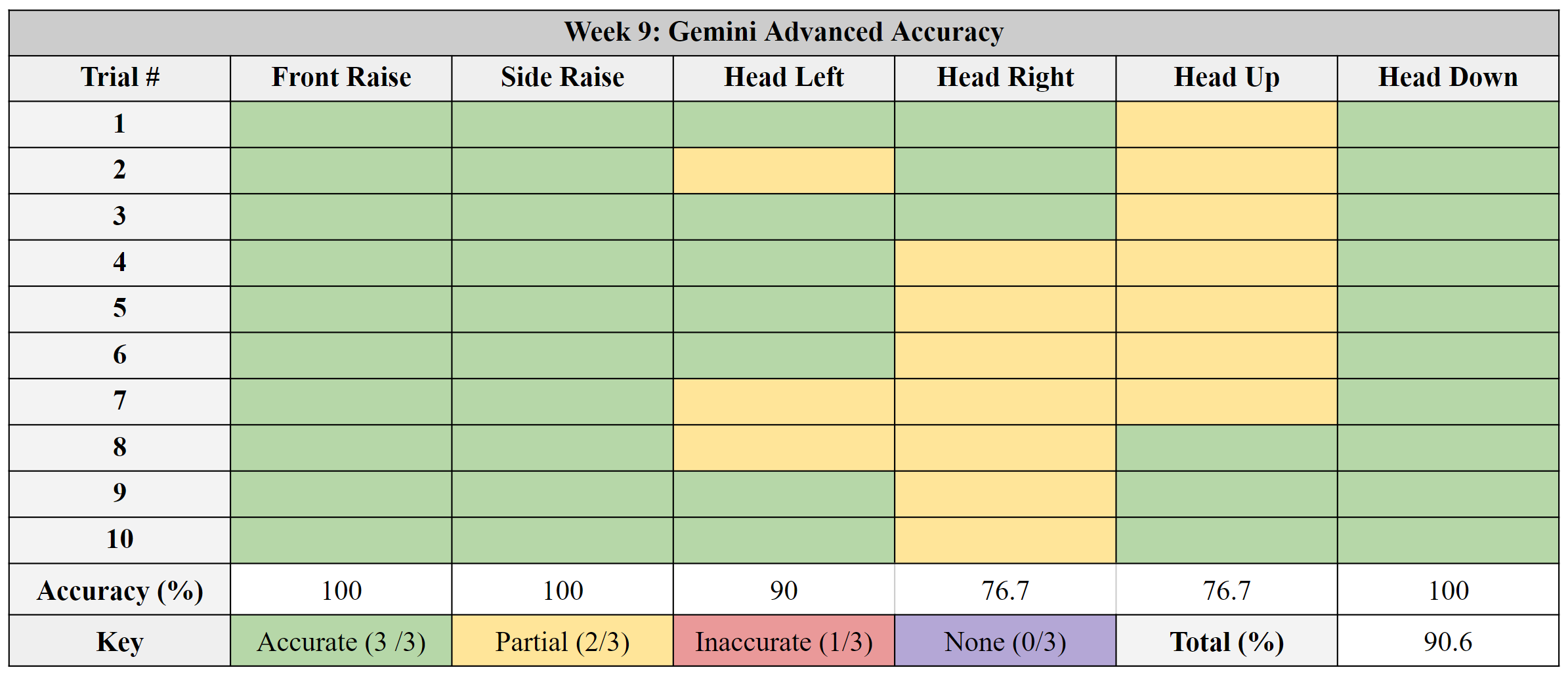| Version 32 (modified by , 17 months ago) ( diff ) |
|---|
Privacy Leakage Study and Protection for Virtual Reality Devices
Advisor: Dr. Yingying (Jennifer) Chen
Mentors: Changming LiGR, Honglu LiGR, Tianfang ZhangGR
Team: Dirk Catpo RiscoGR, Brody VallierHS, Emily YaoHS
Project Overview
Augmented reality/virtual reality (AR/VR) is used for many applications and have been used for many purposes ranging from communicating and tourism, all the way to healthcare. Accessing the built-in motion sensors does not require user permissions, as most VR applications need to access this information in order to function. However, this introduces the possibility of privacy vulnerabilities: zero-permission motion sensors can be used in order to infer live speech, which is a problem when that speech may include sensitive information.
Project Goal
The purpose of this project is to extract motion data from AR/VR devices inertial measurement unit (IMU), and then input this data to a large language model (LLM) to predict what the user is doing
Weekly Updates
Week 1
Progress
- Read research paper [1] regarding an eavesdropping attack called Face-Mic
Next Week Goals
- We plan to meet with our mentors and get more information on the duties and expectations of our project
Week 2
Progress
- Read research paper [2] regarding LLMs comprehending the physical world
- Build a connection between research paper and also privacy concerns of AR/VR devices
Next Week Goals
- Get familiar with AR/VR device:
- Meta Quest
- How to use device
- Configure settings on host computer
- Extract motion data from IMU
- Connecting motion sensor application program interface (API) to access data
- Data processing method
Week 3
Progress
- Set up host computer and android studio environment
- Started extracting data from the inertial measurement unit (IMU)
- Recorded and ran trials of varying head motions
Next Week Goals
- Run more tests to collect more data
- Design more motions for data collection
*Different head motions
- Rotational
- Linear
- Combinations of head motions
- Looking left and then right
- Looking up and then down
Week 4
Progress
- Designed and collected more motion data
- Looking up then back middle
- Looking right then back middle
- Moving head around in a shape
- Moving head back and forward
- Used MATLAB noise removing functions to clean graphs
- 3D visual of acceleration to show time and position
Next Week Goals
- Find a way to get hand motion data using Android Studio
- Work on fixed prompts to get accurate LLM results using ChatGPT 4o and ChatGPT 4
Week 5
Progress
- Enabling hand motion data collection using VR device
- Utilize Android Studio and VrApi to access VR controller interface and extract motion data
- Conducted additional motion experiments to gather comprehensive data sets
- Implemented 3D plots to visualize and analyze hand motion data for accuracy
Next Week Goals
- Utilize motion research paper [3] to model more motion activities
- Start building a CNN model that can recognize activity based on motion data
Week 6
Progress
- Made a list of different motion data to capture and train a convolutional neural network (CNN)
- Do research on previous work based on raw motion data and CNN’s
- Specifics of the motion data
- Design prompt for LLM and see output results
Next Week Goals
- Start getting more motion data
- Start using LLM to analyze the collected data
- Use the designed prompts
- Design and try more prompt structures and compare LLM responses
Week 7
Progress
- Collected 250 samples from six different motions to enlarge datasets for the CNN task
- Designed prompts with specific parts for LLMs to establish activity recognition tasks
- Tested prompt with different LLMs
Next Week Goals
- Improve the prompt design to get more accurate prediction results from LLMs
- Begin developing a CNN using samples collected from the six motion patterns
Week 8
Progress
- Built a 1-dimensional (1D) convolution neural network (CNN) for activity recognition
- Improving the prompt design to get more accurate predictions results from LLM
- LLM’s accuracy of classifying six different motions with new prompt
Next Week Goals
- Use MATLAB to convert time domain motion data into frequency domain for more data representation
- Improve LLM results (78.18%) to be more similar to CNN results (98.22%) by improving fixed prompt
Week 9
Progress
- Built threat models for this AR/VR human activity recognition project (HAR)
- Conducted feature extraction methods and used a support vector machine (SVM) model to select effective features
- Improved LLM fixed prompt from a previous 78.18% to a 90.6%
Next Week Goals
- Improve LLM fixed prompt to get better results than 90.6% by adding statistical features into the prompt derived from SVM results (99.33%)
Week 10
Progress
- Placeholder
Next Week Goals
- Placeholder
Links to Presentations
Week 1 Week 2 Week 3 Week 4 Week 5 Week 6 Week 7 Week 8 Week 9 Week 10 Final Presentation
References
[5] MBrownlee, Jason. “1D Convolutional Neural Network Models for Human Activity Recognition.” MachineLearningMastery.Com, 27 Aug. 2020, machinelearningmastery.com/cnn-models-for-human-activity-recognition-time-series-classification/#comments.Attachments (36)
- Week_3_Extracting_Data_IMU.png (67.5 KB ) - added by 17 months ago.
- Week_3_Gyro_Graphs.png (304.1 KB ) - added by 17 months ago.
- Week_3_Acc_Graphs.png (354.4 KB ) - added by 17 months ago.
- Week_3_Head_Forward.gif (18.6 MB ) - added by 17 months ago.
- Week_3_Head_Rotation.gif (15.1 MB ) - added by 17 months ago.
- Week_4_Original_Graph.png (106.0 KB ) - added by 17 months ago.
- Week_4_Original_Smooth_Graph.png (109.1 KB ) - added by 17 months ago.
- Week_4_Original_Smooth_Lowpass_Graph.png (112.4 KB ) - added by 17 months ago.
- Week_4_Original_Smooth_Lowpass_Findpeaks_Graph.png (105.3 KB ) - added by 17 months ago.
- Week_4_3D_XYZ_Graph.png (99.9 KB ) - added by 17 months ago.
- Week_4_3D_XY_Graph.png (110.0 KB ) - added by 17 months ago.
- Week_5_Three_Motions.gif (11.0 MB ) - added by 17 months ago.
- Week_5_Left_3D_Graph.png (156.7 KB ) - added by 17 months ago.
- Week_5_Head_3D_Graph.png (136.4 KB ) - added by 17 months ago.
- Week_5_Right_3D_Graph.png (165.0 KB ) - added by 17 months ago.
- Week_6_Front_Raise.gif (5.4 MB ) - added by 17 months ago.
- Week_6_Side_Raise.gif (6.0 MB ) - added by 17 months ago.
- Week_6_Head_Left.gif (5.4 MB ) - added by 17 months ago.
- Week_6_Head_Right.gif (5.6 MB ) - added by 17 months ago.
- Week_6_Head_Up.gif (5.5 MB ) - added by 17 months ago.
- Week_6_Head_Down.gif (5.9 MB ) - added by 17 months ago.
- Week_6_LLM_Output.png (541.1 KB ) - added by 17 months ago.
- Week_7_Prompt.png (49.0 KB ) - added by 17 months ago.
- Week_7_ChatGPT_Output.png (206.0 KB ) - added by 17 months ago.
- Week_7_Gemini_Output.png (252.5 KB ) - added by 17 months ago.
- Week_8_Train_Graph.png (33.4 KB ) - added by 17 months ago.
- Week_8_Conf_Matrix.png (32.8 KB ) - added by 17 months ago.
- Week_8_Prev_Prompt.png (45.8 KB ) - added by 17 months ago.
- Week_8_New_Prompt.png (56.5 KB ) - added by 17 months ago.
- Week_8_LLM_Results.png (84.8 KB ) - added by 17 months ago.
- Week_8_CNN_Arch.png (42.8 KB ) - added by 17 months ago.
- Week_9_SVM_Conf_Matrix.png (29.6 KB ) - added by 17 months ago.
- Week_9_LLM_Results.png (99.2 KB ) - added by 17 months ago.
- Week_9_New_Prompt.png (115.8 KB ) - added by 17 months ago.
- Week_10_LLM_Error_Summary_Response.png (50.5 KB ) - added by 16 months ago.
- Week_10_LLM_Error_Code_Response.png (168.4 KB ) - added by 16 months ago.

